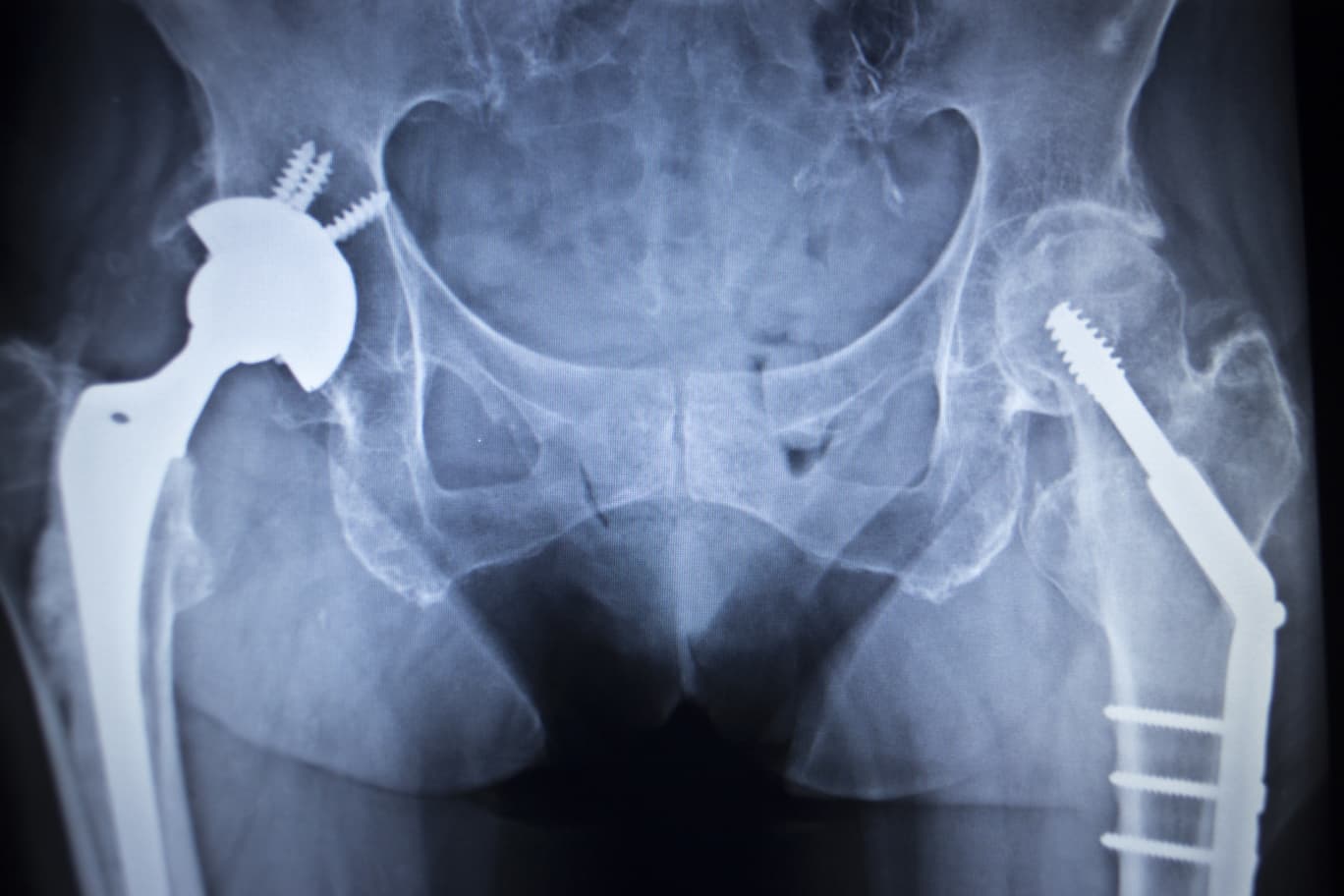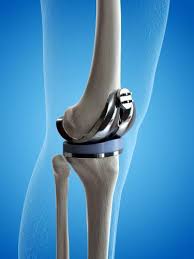
Hip Replacement Options
Hip replacement surgery is a common procedure that is performed to alleviate pain and improve mobility for patients with hip arthritis or other hip conditions. However, with advances in technology and medical knowledge, there are now many options for hip replacement surgery. In this article, we will explore the different types of hip replacement surgery and their pros and cons.
Which Method of Hip Replacement Is the Best?
No one “best” method of hip replacement surgery is appropriate for all patients. The choice of procedure depends on several factors, including the patient’s age, the severity of the hip condition, and the surgeon’s preference and expertise.
The most common type of hip replacement surgery is the traditional total hip replacement. This involves replacing the entire hip joint with an artificial one made of metal, plastic, or ceramic. The procedure can be performed using a minimally invasive technique, which involves making smaller incisions and causing less tissue damage. The benefits of a total hip replacement include pain relief and improved mobility.
Another type of hip replacement surgery is partial hip replacement, which involves replacing only the damaged part of the hip joint. This is a less invasive procedure and can be suitable for patients with less severe hip damage. However, the success rate of a partial hip replacement is lower than that of a total hip replacement.
What Is the Newest Procedure for Hip Replacement?
The newest procedure for hip replacement is the anterior approach hip replacement. This involves making an incision at the front of the hip joint, which allows the surgeon to access the joint without cutting through major muscles. This results in less tissue damage and a quicker recovery time for the patient.
The anterior approach hip replacement is not suitable for all patients, and it requires specialized training for the surgeon. However, for the right patient, it can offer several benefits, including less pain, faster recovery, and improved mobility.

Is There an Alternative to Total Hip Replacement?
For patients who are not candidates for hip replacement surgery or who want to delay surgery, there are alternative treatments available. These include physical therapy, medications, and lifestyle modifications.
Physical therapy can help to strengthen the muscles around the hip joint, improve flexibility, and reduce pain. Medications such as nonsteroidal anti-inflammatory drugs (NSAIDs) can help to reduce inflammation and relieve pain. Lifestyle modifications such as weight loss and regular exercise can also help to improve hip function and reduce pain.
It is important to note that alternative treatments may not be effective for all patients, and they may not provide long-term relief from hip pain and immobility.
What Is the Safest Hip Replacement?
All hip replacement surgeries carry some risks, including infection, blood clots, and dislocation of the new hip joint. However, the risk of complications can be minimized by choosing a qualified surgeon and following all pre-and post-operative instructions.
The choice of implant materials can also affect the safety of hip replacement surgery. Some implant materials, such as metal-on-metal implants, have been associated with higher rates of complications and failure. Patients should discuss the risks and benefits of different implant materials with their surgeon before undergoing hip replacement surgery.
Innovations in Hip Replacement: New Technologies and Techniques
Hip replacement surgery has come a long way since the first procedure was performed in the early 1900s. Today, new technologies and techniques are constantly being developed to improve the safety and effectiveness of hip replacement surgery. In this article, we will explore some of the latest innovations in hip replacement surgery.
One of the most exciting new developments in hip replacement surgery is the use of 3D-printed implants. These implants are custom-designed for each patient based on a CT scan or MRI, ensuring a perfect fit and reducing the risk of complications. 3D-printed implants can also be made from newer materials that are more durable and have a longer lifespan than traditional implants.
Another innovation in hip replacement surgery is computer-assisted surgery. This technique uses computer imaging to create a virtual model of the patient’s hip joint, allowing the surgeon to plan the surgery and optimize the placement of the implant. This can result in greater accuracy and fewer complications during the procedure.
Minimally invasive techniques are also becoming increasingly popular for hip replacement surgery. These techniques involve smaller incisions and less tissue damage than traditional hip replacement surgery, which can result in less pain, faster recovery times, and a lower risk of complications. One example of a minimally invasive technique is the anterior approach, which involves accessing the hip joint from the front of the body rather than the back.
Another innovation in hip replacement surgery is the use of robotics. Some surgeons are now using robotic-assisted surgery to improve the accuracy of implant placement and reduce the risk of complications. During robotic-assisted surgery, the surgeon uses a robotic arm to guide the placement of the implant, which can result in greater precision and improved outcomes.
The Study of Hip Replacement Options
A recent study published in the Journal of Orthopedic Surgery demonstrated that the anterior approach hip replacement had a significantly lower risk of complications and a quicker recovery time compared to traditional approaches. The study analyzed a large cohort of patients who underwent hip replacement surgery, and those who received the anterior approach experienced fewer complications, such as dislocations and infections, and were able to return to their normal activities more rapidly. These findings support the benefits of the anterior approach as a safe and effective option for hip replacement surgery.
What Percent of Hip Replacements Are Successful?
The success rate of hip replacement surgery is generally high. According to the American Academy of Orthopaedic Surgeons, more than 90 percent of hip replacement surgeries are successful, with patients experiencing significant pain relief and improved mobility.
However, the success of hip replacement surgery can depend on several factors, including the patient’s age, overall health, and the severity of the hip condition. Patients need to discuss their risks and benefits with their surgeon before undergoing hip replacement surgery.
Healthy Türkiye Notes About Hip Replacements
In conclusion, hip replacement surgery is a common and effective treatment for hip arthritis and other hip conditions. However, there are many options available for hip replacement surgery, and patients should work with their surgeon to determine the best option based on their individual needs and preferences. It is important to consider factors such as the invasiveness of the procedure, recovery time, and potential risks and benefits.
Patients should also be aware of alternative treatments that may be effective for managing hip pain and improving mobility. Physical therapy, medications, and lifestyle modifications can be helpful in some cases and may delay or even prevent the need for hip replacement surgery.
Ultimately, the success of hip replacement surgery depends on many factors, including the patient’s overall health and the skill and experience of the surgeon. Patients should choose a qualified surgeon and follow all pre-and post-operative instructions to minimize the risk of complications and ensure the best possible outcome.
In summary, there are many exciting new technologies and techniques being developed for hip replacement surgery. From 3D-printed implants to computer-assisted surgery to minimally invasive techniques and robotics, these innovations are improving the safety and effectiveness of hip replacement surgery and helping patients achieve better outcomes.
If you are considering hip replacement surgery, it is important to talk to Healthy Türkiye’s surgeons about the latest options and choose a surgeon who is experienced in using these innovative techniques. The newest procedure for hip replacement is the anterior approach, which offers several benefits including less pain and a quicker recovery time. Alternative treatments such as physical therapy, medications, and lifestyle modifications may also be effective in managing hip pain and improving mobility.
All hip replacement surgeries carry some risks, but the success rate is generally high. Patients should work with their surgeon to determine the best option for their individual needs and follow all pre- and post-operative instructions to ensure the best possible outcome.



